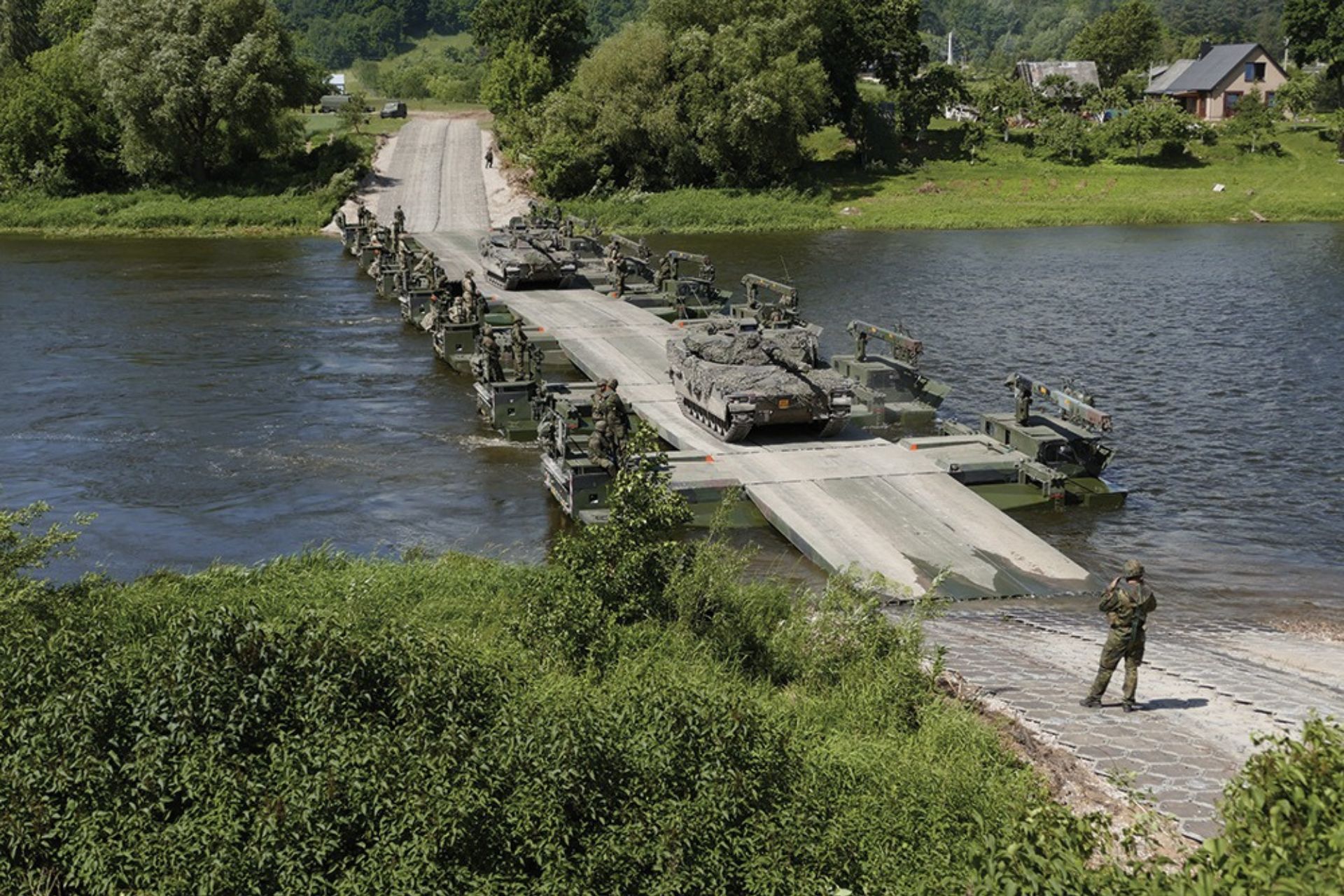Breaking News
Sweden Strengthens Its Crossing Capabilities with New Amphibious M3 Systems from GDELS.
General Dynamics European Land Systems (GDELS) has received an order for a fourth batch of M3 amphibious bridge and ferry systems for the Swedish Armed Forces. The contract was signed with the Swedish defense procurement agency Försvarets Materielverk (FMV) on September 5, 2024. This order marks a new phase in strengthening Sweden's aquatic obstacle-crossing capabilities.
Follow Army Recognition on Google News at this link

The M3 can be used as a bridge or a multi-bay ferry, offering great flexibility on the field (Picture source: GDELS)
The M3 is recognized as the most modern and fastest amphibious bridge and ferry system in the world, in terms of load capacity, assembly time, and maneuverability on land and water. It can carry loads of up to MLC 85T/132W, including main battle tanks such as the Leopard 2, M1A2 Abrams, and Challenger 2. This system provides smooth transitions between land and water and can be operated by a crew of only two soldiers.
Increased system automation also helps reduce operating costs. The M3 can be used as a bridge or a multi-bay ferry, offering great flexibility on the field. In terms of interoperability, it is compatible with other bridging solutions such as the SRB (Standard Ribbon Bridge) and IRB (Improved Ribbon Bridge), enabling joint operations with coalitions using different systems.
Sweden will be able to use the M3 amphibious systems with various heavy military vehicles currently in service with its armed forces. Among the equipment Sweden could use with the M3 is the Stridsvagn 122 main battle tank, a modified version of the German Leopard 2. Weighing around 62 tons, the Strv 122 is fully compatible with the M3's transport capabilities.
The CV90 infantry fighting vehicles, produced in Sweden and used in various versions, can also cross M3 bridges or ferries. Weighing between 25 and 35 tons depending on the version, these armored vehicles are well-suited for amphibious operations with the M3. Additionally, armored personnel carriers, such as the all-terrain BvS 10 vehicles, are capable of using the M3 systems to cross flooded areas or rivers.
Before acquiring the M3 systems, Sweden primarily used the IRB (Improved Ribbon Bridge) system to cross water bodies. The IRB is a floating bridge system capable of transporting heavy armored vehicles and other military equipment. However, the M3 offers additional advantages in terms of deployment speed, flexibility, and interoperability with other NATO systems, such as those used by the United States, the United Kingdom, and Germany.

Before acquiring the M3 systems, Sweden primarily used the IRB (Improved Ribbon Bridge) system to cross water bodies (Picture source: GDELS)
With this acquisition, Sweden significantly improves its crossing capabilities, as its M3 fleet will now be able to cover up to 400 meters of obstacles. In addition to the M3, the Swedish Armed Forces also operate the IRB pontoon system and coupling adapters, allowing for the combined use of both bridge types.
This combination enhances Sweden's ability to conduct multinational missions with partners such as the United States, the United Kingdom, Germany, the Netherlands, and Latvia, which use similar systems. This places Sweden at the forefront of interoperability within NATO, drawing on lessons learned from recent deployments, exercises, and studies.
The M3 amphibious system is the fastest available means within NATO for crossing aquatic obstacles. It can be used as either a floating bridge or a ferry to transport even the heaviest main battle tanks across wide water gaps. Designed for all-terrain use, the M3 can be operational in just a few minutes, a crucial factor in modern battles where speed is essential on increasingly transparent battlefields. The system has proven its effectiveness in a variety of climatic and topographical conditions, from tropical regions to arctic environments.
With this new order, Sweden continues to modernize its military capabilities in crossing operations and interoperability with its NATO allies, further


























